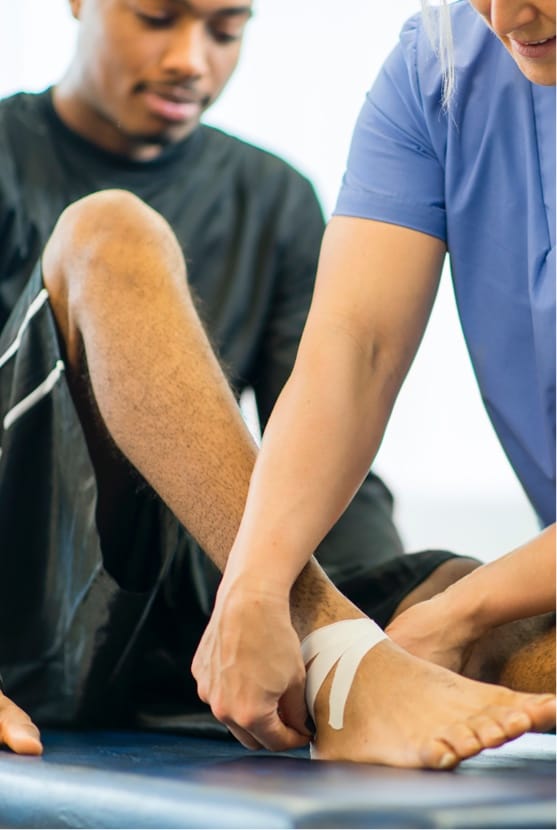Chondromalacia can develop in any joint, including the foot and ankle, which comprises 33 different joints. Within each of these joints is a cushion of cartilage that acts as a shock absorber. Chondromalacia develops when this cartilage deteriorates and softens. If caught early, this disease is often reversible with the right combination of biologic treatments and physical therapy.
Diagnosing chondromalacia
Dr. Yoon will carefully examine you for signs of swelling or sensitivity through a range of foot and ankle movements while gently applying pressure. Once he has factored in your physical history and level of activity, an effective treatment plan can be tailored to your specific condition.
Common Causes
Chondromalacia is a condition that usually results from one or more of the following:
- Trauma, such as sprains, fractures and breaks in the bone.
- Overuse, particularly with repetitive motions.
- Muscle imbalance between weaker and stronger muscles.
- Rheumatoid arthritis or osteoarthritis.
- Overuse of steroid injections to treat inflammation.

Symptoms
- General foot tenderness
- Increased foot/ankle pain after a period when you are off your feet.
- Grating or grinding feeling when straightening or flexing feet.
- Foot or ankle pain during or after intense activity
- The pain can in the ankle joint or in any of the joints in the foot or toes.
How is chondromalacia treated?
The first goal is to reduce the inflammation. This affliction can often heal naturally, unlike osteoarthritis and other forms of arthritis. If the degree of foot or ankle pain is extremely uncomfortable, affecting quality of life, or fast healing is of major importance, as with pro athletes, Dr. Yoon will apply a combination of biologic therapies as needed. Autologous serum therapy may be the treatment that will bring down inflammation quickly, as this treatment is site-specific.
More chronic or severe cases may require the PRP injections to accelerate healing. While conservative measures such as rest, avoiding activities that cause pain and physical therapy can be helpful, it may take weeks or even months to resolve. Swimming is often recommended to maintain body strength and joint flexibility without stressing the joint injury while it heals.
Root causes of chondromalacia
Dr. Yoon will also check to see if the underlying cause of your chondromalacia is based on alignment issues or muscular imbalance.
When a misalignment has been allowed to continue for a length of time, the joints can become inflamed, leading to further misalignment that progresses to cartilage degeneration.
Dr. Yoon can recommend specific physical therapy tests to assess balance and alignment issues that can be corrected with exercises, foot braces or tape, orthotics and arch supports so that the mechanics of motion are in harmony with the natural structure of your body. This therapy helps ensure the condition doesn’t advance and become chronic. Although some severe anatomic misalignments may require surgical correction, many can be effectively treated with regenerative therapy, and non-invasively.

